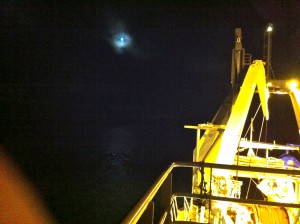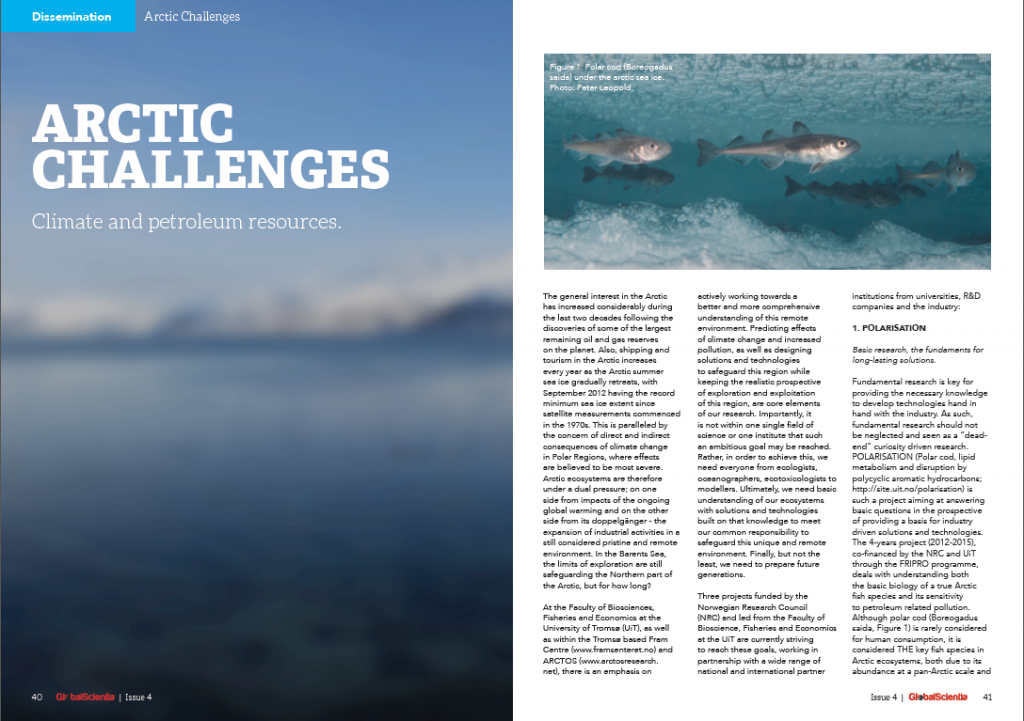By Ekaterina Korshunova
On the 2nd of January Jasmine called me and asked if I would like to join the cruise to Svalbard to get live polar cod for her experiments in four days. I was positively surprised and accepted the offer immediately. The cruise was led by Marit Reigstad and I was very happy to meet many nice people working on her “Carbon Bridge” project. I was also very glad that Sam would help me taking care of polar cod.
We started our cruse from Longyearbyen on the 6th of January and went directly to the North in order to cross the Atlantic current at about 810N. Unfortunately, there were some problems with the instruments, and it took some time to adapt them to the cold. So Marit decided to go to Rijpfjorden for polar cod in order not to lose the time. On the 8th of January in the morning we started trawling. I expected the weather to be minus 20 degrees and wind, so I put on all the cloths that I had. The actual weather was quite mild and only minus 5 degrees, but this I found out after I went outside. Moreover, I was stressed to get as many fish as possible and I did not really care how I looked like unless I saw this picture…

Yes, I looked like a ball, but I was warm and WE GOT POLAR COD! So, I and Sam were really happy!
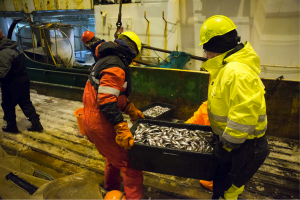
Together with polar cod we got other fish species like haddock, Atlantic cod, capelin, daubed shanny that we should dissect for stomach content. The most difficult part was to define all the species and to find the differences between polar cod and small Atlantic cod. But we were very lucky and got some help from the crew member Jan Roald.
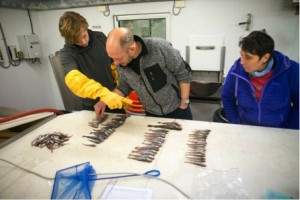
We finished the dissection at 3 a.m. and were very tired. However, in the night I could not sleep. It was a storm of about 20 m/s, and I really worried about my polar cod, if they were ok in the tanks and would not swim away. Only in the evening the next day the storm was over and most of the polar cod fortunately survived it. I sent a picture of a tank with fish to Jasmine, and she wrote that it was very few fish and not enough for the experiments. So, Kongsfjorden was our next target to get more polar cod.
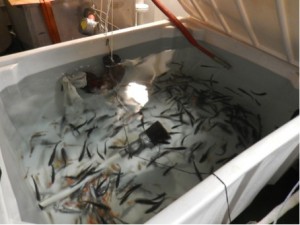
On the way to Kongsfjorden we made a stop at Moffen to get some samples of Icelandic scallops from my PhD project. We used triangle dredge to take them from the bottom, and then we sorted them out from the sediments. I, having so many cloths on me, could do it only in the horizontal position. But I was still very warm and comfortable.

Almost all Icelandic scallops caught at Moffen had huge amounts of barnacles on their shells. The weight of the scallops with barnacles was sometimes four times more than without them.
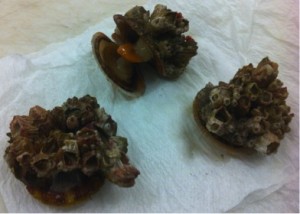
13th of January: Two days of the cruise left, but we still had about 200 polar cod in the tanks instead of 1000. Luckily, all the water samples for “Carbon Bridge” project were done and our small fish group (Sam and me) got a possibility to trawl the whole night in Kongsfjorden until we got the desired amount of polar cod.
POOR PEOPLE who could not sleep that night because of our eight trawling operations… I am still very sorry. But we got only one trawl with polar cod. Our two tanks were full; however, I did not give up getting even more in order to be sure that Jasmine would be happy.
All our night trawls had different fish species and lots of shrimps that we cooked and ate together with crew. Sam was happy as he got a lot of stomach samples and made many fillets of Atlantic cod and halibut for all his friends in Longyearbyen.
14th of January: There was no more time to stay in Kongsfjorden. In the morning Marit and I agreed to go towards Longyearbyen and try Billefjorden as a last chance to get more polar cod. Thus, I had finally time to go to bed and sleep.
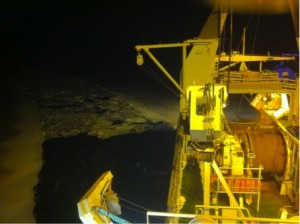 In the evening the same day we approached Billefjorden covered with the sea ice. It was quite cold outside, but we all were excited. We were definitely in the Arctic! Brrr…
In the evening the same day we approached Billefjorden covered with the sea ice. It was quite cold outside, but we all were excited. We were definitely in the Arctic! Brrr…
In the night we got time to trawl again before coming back to the harbor in Longyearbyen. Sam was really tired, and I decided not to wake him up when the first trawl came on the deck. I was alone with the crew and we were not quick enough. As the result, all the polar cod got frozen in the cod end. In the second trawl I was sure that we did not get any polar cod, I thought there were only small Atlantic cod and we threw the catch back to the sea. However, when the crew members sorted shrimps for cooking they found only polar cod among the shrimps. These polar cod were not black as the ones from Rijpfjorden and Kongsfjorden. They had a yellow skin colour. But when I opened one of the fish and saw the big gonads, I did not have any doubts. It was polar cod! We filled our last tank with polar cod from Billefjorden and in two hours we were already back in Longyearbyen.
It was an interesting and instructive cruise for me. We did everything what we were supposed to do. I would like to thank Marit Reigstad for a good organization and understanding all our preferences. I thank the crew members for the technical support, maintenance of the tanks, transportation of polar cod and the tasty shrimps that we cooked in the night. I thank all my nice and kind colloquies who made this cruise wonderful and unforgettable. Last, but not least, I thank Jasmine for giving me the opportunity to go on the cruise and start the New year so GOOD!
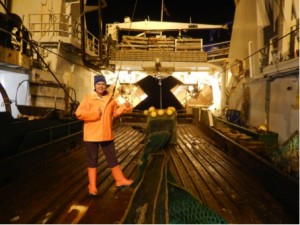
Photos were taken by Rudi Caeyers and Ekaterina Korshunova
 9 people like this post.
9 people like this post.
